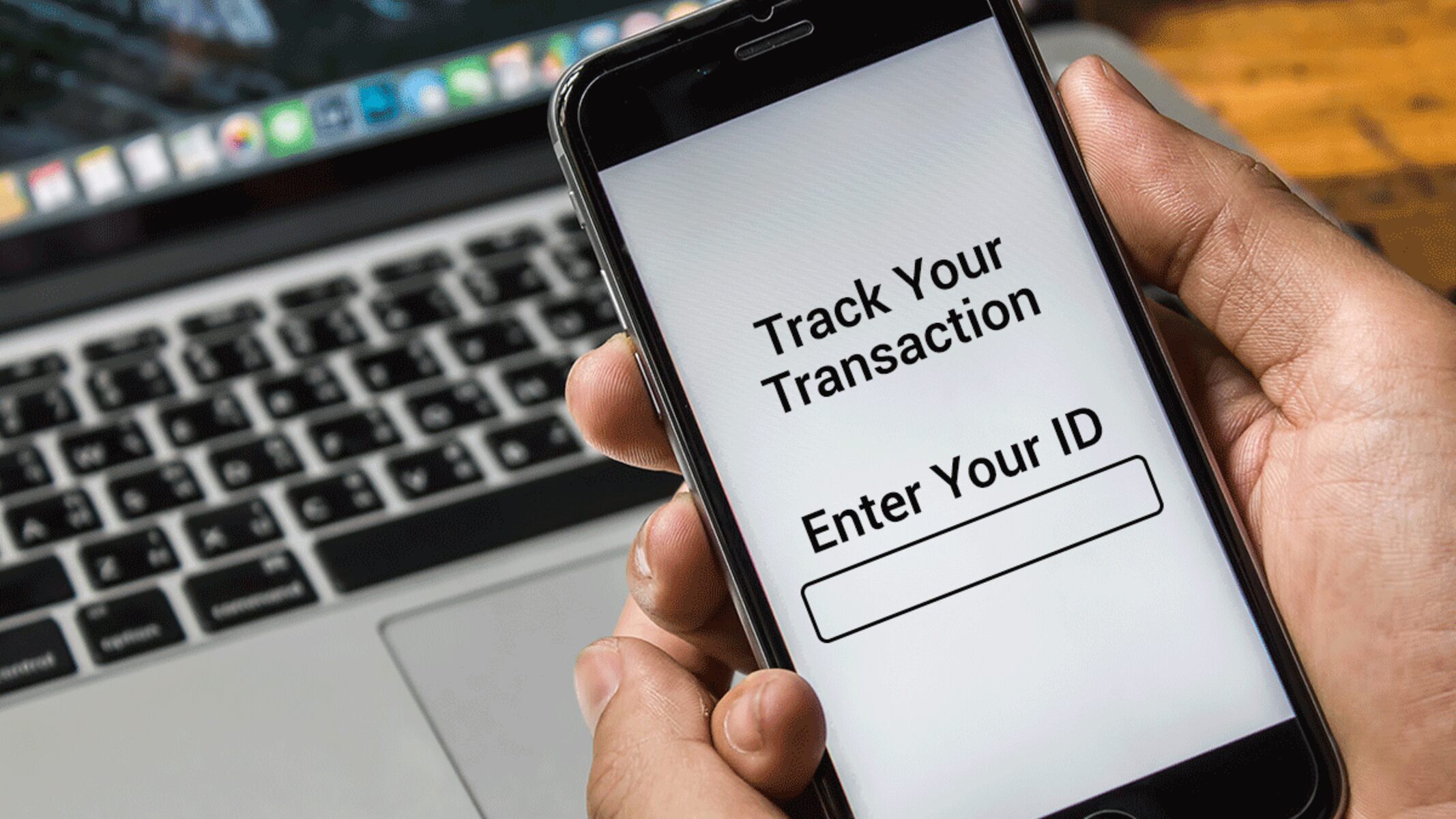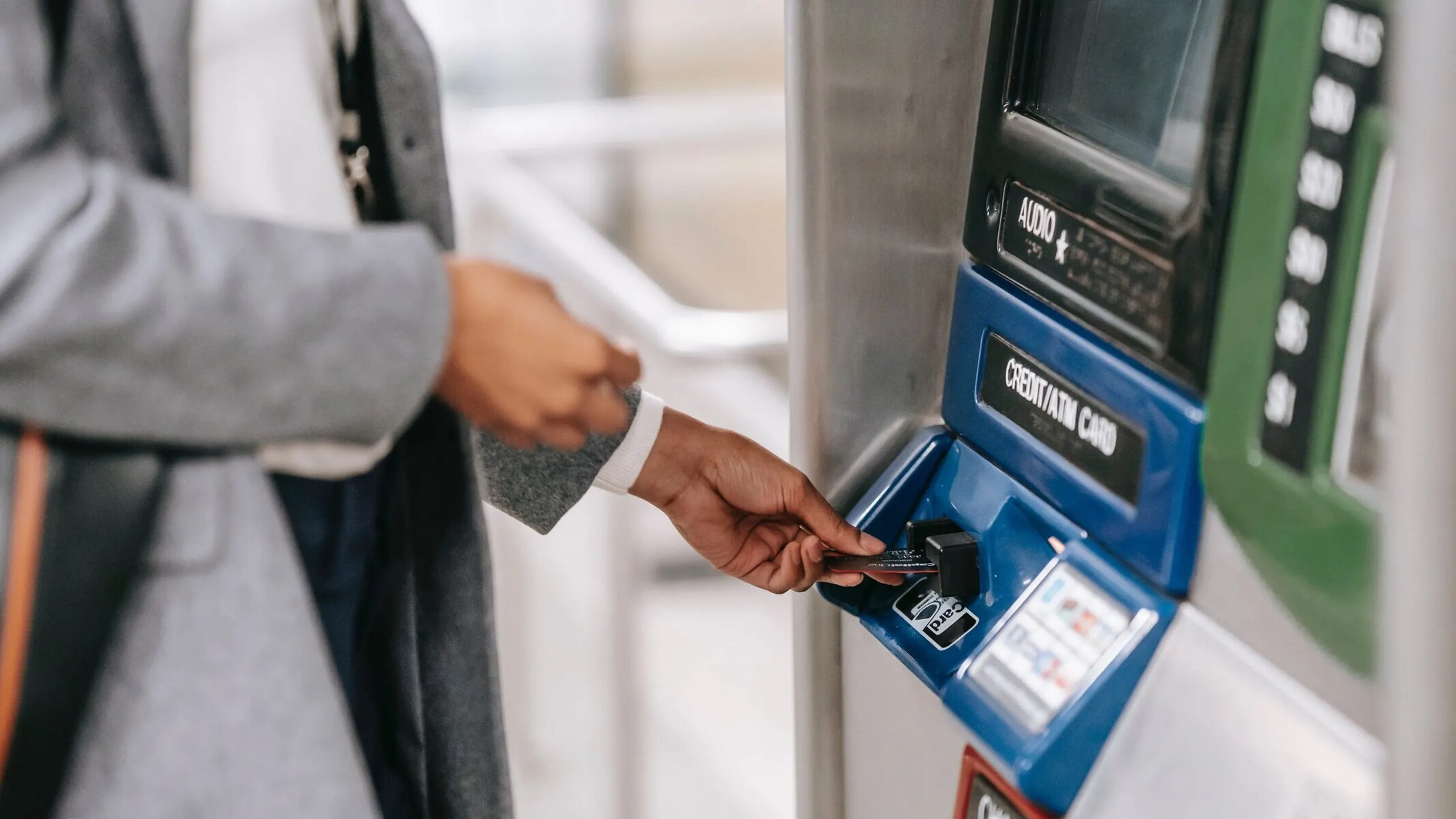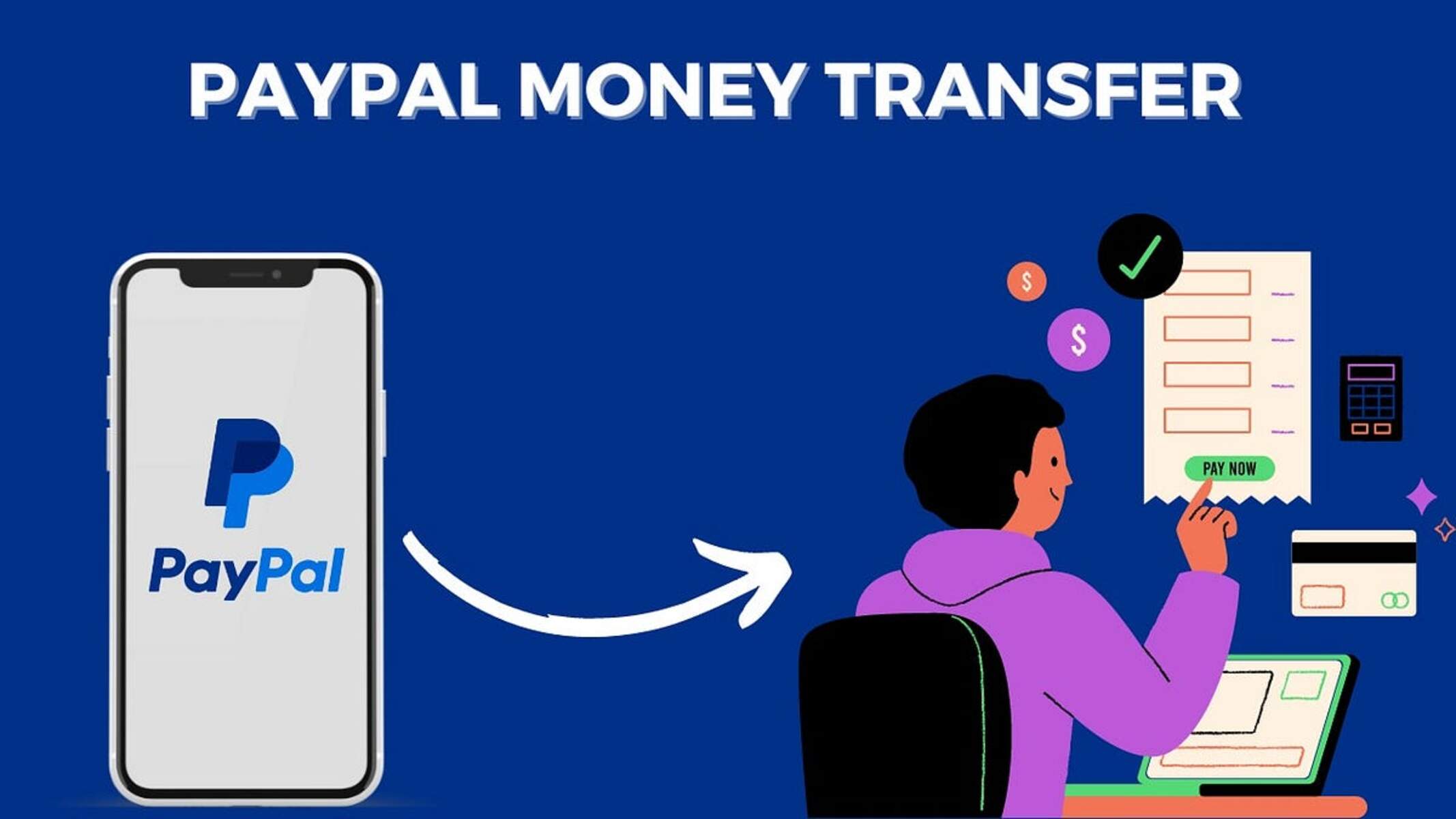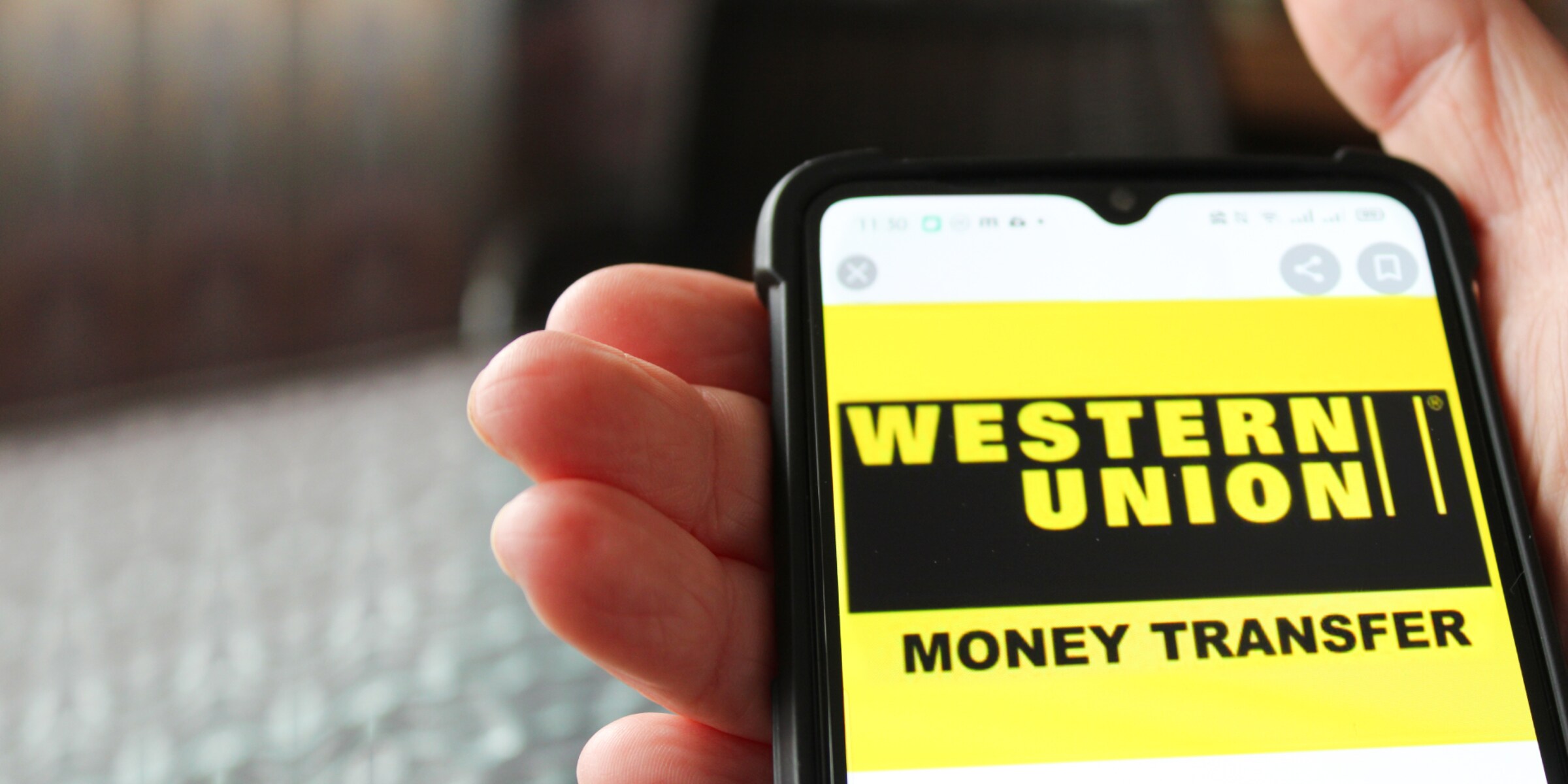Introduction
Money transfer has become an essential service in today’s globalized world. Whether you need to send money to a family member, pay for goods or services, or support a loved one abroad, knowing how to navigate the process is crucial. With numerous money transfer services available, it’s vital to choose the right one that meets your specific needs.
In this article, we will guide you through the step-by-step process of initiating a money transfer. From setting up an account to ensuring secure delivery, we’ll provide you with the necessary information to make your transaction smooth and hassle-free. So, let’s dive in!
Before we begin, it’s important to note that different money transfer services may have varying procedures. However, the general steps outlined here will give you a comprehensive overview of the process, regardless of the specific service you choose.
Now, let’s get started on your journey to successfully transferring money!
Step 1: Choose the right money transfer service
The first and most crucial step in transferring money is selecting the right money transfer service. With a multitude of options available, it’s important to consider certain factors before making your choice.
Start by researching different money transfer services and comparing their features, fees, exchange rates, and transfer speeds. Look for services that have a reliable track record, good customer reviews, and secure encryption to protect your financial information.
Consider the location and availability of the service. Ensure that the service you choose operates in the countries you need to send money to or receive money from. Additionally, check if the service offers convenient pickup locations or if it can transfer funds directly to a bank account.
Take into account the fees associated with the service. Some services charge a flat fee per transaction, while others have a percentage-based fee that increases with the transfer amount. Compare the fees across different services to find the most cost-effective option for your specific needs.
Exchange rates play a crucial role in money transfers, especially for international transactions. Look for a service that offers competitive exchange rates to ensure your recipient receives the maximum amount of money. Be aware of services that offer low fees but unfavorable exchange rates, as this can significantly impact the final amount received by the recipient.
Consider the customer support offered by the money transfer service. Check if they have a responsive and knowledgeable support team that can assist you in case of any issues or concerns during the transfer process.
Once you have gathered all the necessary information and compared different service providers, choose the one that best aligns with your requirements. Take into account factors such as cost-effectiveness, convenience, reliability, and security to make an informed decision.
Now that you’ve chosen the right money transfer service, it’s time to move on to the next step: setting up an account. Let’s continue!
Step 2: Set up an account
Setting up an account with your chosen money transfer service is an essential step that allows you to initiate and track your transfers conveniently. Here are the key points to consider:
First, visit the website or download the mobile app of the money transfer service. Look for the option to create a new account or sign up. Most services provide a straightforward registration process that requires you to provide basic personal information such as your name, email address, and contact details.
Next, choose a strong and unique password to secure your account. It’s crucial to select a password that is not easily guessable and that includes a combination of letters, numbers, and special characters.
Some money transfer services may require you to verify your identity for security purposes. This may involve submitting a copy of your identification documents, such as a passport or driver’s license, electronically. Follow the instructions provided by the service to successfully complete the verification process.
Once you have completed the registration process and verified your account, you will typically receive a confirmation email or notification. Click on the confirmation link or follow the instructions provided to activate your account.
It’s important to keep your account credentials confidential and secure. Avoid sharing your account login information with anyone and regularly update your password to minimize the risk of unauthorized access.
Now that your account is set up and ready to go, you can proceed to the next step: providing the necessary information.
Remember, each money transfer service may have slightly different steps and requirements for account setup. Follow the instructions and guidance provided by your chosen service to ensure a smooth and successful registration process.
Step 3: Provide necessary information
After setting up your account, it’s time to provide the necessary information required to initiate the money transfer. This step ensures that the transfer is accurately processed and reaches the intended recipient. Here’s what you need to do:
Start by logging into your money transfer account. Once logged in, look for the option to send money or initiate a transfer.
Specify the currency in which you want to send the money. Depending on the service, you may have the option to choose from multiple currencies. Select the appropriate currency to align with the recipient’s location and preferences.
Provide the details of the recipient. This typically includes their full name, contact information, and bank account details, if applicable. Make sure to double-check the accuracy of the recipient’s information to avoid any delays or errors in the transfer.
In some cases, you may need to provide additional information about the purpose of the transfer, such as whether it’s for personal or business reasons. This information helps the money transfer service comply with regulatory requirements and ensures that your transfer is processed smoothly.
Take note of any transaction or reference numbers provided during this step. These numbers can serve as important identifiers for tracking the progress of your transfer and addressing any inquiries or issues that may arise.
Before proceeding to the next step, carefully review and verify all the information you have provided. It’s crucial to ensure the accuracy of the recipient’s details, the transfer amount, and any additional information required by the service.
Once you are confident that the information provided is accurate, click on the “Next” or “Continue” button to move forward with the transfer process.
Now that you have successfully provided the necessary information, you can proceed to the next step, which involves selecting the recipient’s details. Let’s move on!
Step 4: Select the recipient’s details
Once you have provided the necessary information, it’s time to select the recipient’s details to ensure that the money transfer reaches the correct individual. Follow these steps:
Start by confirming the recipient’s name and contact information. Ensure that the details entered match the information you have previously provided. Double-check for any spelling errors or typos that could potentially cause issues with the transfer.
If you are sending money to a bank account, you will need to provide the recipient’s bank account details. This typically includes the bank name, branch code, account number, and account holder’s name. It’s crucial to enter these details accurately to prevent any complications in the transfer process.
If the money transfer service allows for cash pickup, you may need to select a convenient pickup location for the recipient. Some services have a network of partner locations where the recipient can collect the funds by providing a valid identification document.
Depending on the service, you may also have the option to include a personalized message for the recipient. This message can serve as a note or explanation for the purpose of the transfer, adding a personal touch to the transaction.
Ensure that you have reviewed and verified all the recipient’s details before proceeding to the next step. It’s essential to confirm that the recipient’s name, contact information, and bank account details, if applicable, are all accurate and error-free.
If everything looks correct, click on the “Next” or “Continue” button to move forward with the transfer process.
Now that you have selected the recipient’s details, the next step will involve entering the transfer amount. Let’s proceed!
Step 5: Enter the transfer amount
Entering the transfer amount is a crucial step in the money transfer process, as it determines the exact sum of money you wish to send to the recipient. Follow these steps to enter the transfer amount accurately:
Once you have selected the recipient’s details, you will typically see a field or option where you can input the transfer amount. Depending on the service, you may be able to enter the amount in either the sender’s currency or the recipient’s currency.
Take into account any fees or charges associated with the transfer. The final amount received by the recipient may be slightly lower due to these fees. Consider whether you wish to cover the full fees yourself or have the recipient bear a portion of the charges.
If you are sending money internationally, be aware that exchange rates may apply. The conversion from one currency to another can lead to variations in the final amount received by the recipient. Ensure you are familiar with the exchange rate being used and the associated fees.
Some money transfer services may offer the option to lock in an exchange rate for a specific period. This can be useful if you want to ensure that the recipient receives a specific amount, regardless of market fluctuations.
Ensure that you have reviewed the transfer amount and any associated fees before proceeding. Verify that the entered amount is accurate and aligns with your intended transfer. Double-check for any decimal points or missing digits that could affect the final sum.
If everything looks correct, click on the “Next” or “Continue” button to move forward with the transfer process.
Now that you have entered the transfer amount, the next step will involve reviewing and confirming the transaction details. Let’s proceed!
Step 6: Review and confirm the transaction
Before finalizing the money transfer, it is crucial to review and confirm all the transaction details to ensure accuracy and prevent any potential errors. Follow these steps to review and confirm the transaction:
Take a moment to carefully review all the provided details. Pay close attention to the recipient’s information, transfer amount, fees, exchange rate (if applicable), and any additional notes or messages you may have included.
Verify that the transfer details align with your intended transaction. Ensure that the recipient’s name, contact information, and bank account details (if applicable) are correct and match your expectations.
Double-check the transfer amount to confirm that you are sending the intended sum of money without any decimal errors or mistaken digits. Be mindful of any fees or exchange rate fluctuations that may affect the final amount received by the recipient.
If the money transfer service provides a summary or breakdown of the fees, take a moment to review them to ensure transparency and understanding of the associated costs.
Read through any terms and conditions or disclaimer text provided by the money transfer service. It’s important to familiarize yourself with any additional information or requirements mentioned in these documents.
If you are satisfied with the reviewed details and are ready to proceed, click on the “Confirm” or “Proceed” button to finalize the transaction.
Some money transfer services may require you to enter a secure verification code or password at this stage to ensure the authenticity of the transaction. Follow the instructions provided by the service to complete this additional security step.
Once you have confirmed the transaction, you may receive a confirmation email or notification with the transaction ID or reference number. It’s a good practice to save this information for future reference or in case you need to contact customer support regarding your transfer.
Now that you have reviewed and confirmed the transaction, the next step will involve paying for the transfer. Let’s proceed to the next step!
Step 7: Pay for the transfer
After reviewing and confirming the transaction details, the next step is to make the payment for the money transfer. Follow these steps to complete the payment process:
Depending on the money transfer service, you will be presented with various payment options. This can include bank transfers, credit or debit card payments, or digital payment platforms such as PayPal or mobile wallets.
Select the payment method that is most convenient for you and ensure that you have the necessary funds available. Take note of any additional fees or charges associated with the selected payment method.
If you are making a bank transfer, carefully enter the required banking details such as your account number, routing number, and any other information requested by the service. Double-check the accuracy of the entered details to avoid any payment failures or delays.
If you are using a credit or debit card, enter the card information as specified by the money transfer service. This typically includes the card number, expiration date, and CVV code. Ensure that the card details are entered correctly to prevent any payment rejections.
If you are using a digital payment platform, follow the provided instructions to complete the payment. This may involve logging into your account, authorizing the payment, or confirming the transaction through a mobile app.
Verify that the payment information entered is accurate and matches your chosen payment method. Ensure that you are comfortable with the total amount to be deducted, including any applicable fees or charges.
Once you are ready, click on the “Pay” or “Submit” button to initiate the payment process. Depending on the payment method and the money transfer service, you may receive a confirmation of payment or a receipt for your reference.
Keep in mind that some money transfer services may require additional security verifications during the payment process, such as One-Time Password (OTP) verification or biometric authentication.
Now that you have successfully made the payment for the transfer, the next step will involve tracking your transfer to ensure its progress and delivery. Let’s move on!
Step 8: Track your transfer
Tracking your money transfer is an essential step to ensure transparency and peace of mind. It allows you to monitor the progress of your transfer and stay updated on its delivery status. Follow these steps to track your transfer:
Once you have made the payment, the money transfer service will typically provide you with a transaction ID or reference number. This unique identifier is essential for tracking your transfer.
Log into your money transfer account and look for the option to track your transfer. It may be available on the main dashboard or in a separate section dedicated to transaction history.
Enter the transaction ID or reference number in the designated field and click on the “Track” or “Search” button. The service will retrieve the latest status of your transfer.
Depending on the money transfer service, you may receive real-time updates on the transfer’s progress. This can include information on when the transfer was initiated, when it is being processed, and when it is completed.
Some services may provide estimated delivery times or notifications once the transfer has been successfully delivered to the recipient. This can help you stay informed about the status of your transaction.
Keep in mind that international transfers may take longer due to factors such as currency conversion and banking regulations of the recipient’s country. Be patient and refer to any estimated delivery times provided by the service.
If you encounter any issues or have concerns about the progress of your transfer, it’s recommended to contact customer support. They can provide you with assistance, answer your questions, and address any concerns you may have.
Regularly check the tracking status of your transfer to stay updated on its progress. If you receive any notifications or updates from the money transfer service, be sure to review them promptly.
By tracking your transfer, you can ensure that it reaches the intended recipient in a timely and secure manner. It provides you with the necessary visibility and control over the transaction.
Now that you are tracking your transfer, it’s time to move on to the next step: notifying the recipient about the transfer. Let’s continue with the process!
Step 9: Notify the recipient
Once you have initiated the money transfer and it is in progress, it’s important to notify the recipient about the impending transaction. This step ensures that the recipient is aware of the transfer and can anticipate its arrival. Follow these steps to notify the recipient:
Communicate with the recipient to inform them about the money transfer. This can be done through various means, such as a phone call, text message, email, or instant messaging platforms.
Provide the recipient with essential details related to the transfer. This includes the estimated amount they will receive, the expected delivery timeframe, and any relevant transaction IDs or reference numbers. Ensure that you communicate these details accurately and clearly.
If necessary, guide the recipient on how they can collect or access the funds. Inform them about any specific instructions or requirements, such as presenting identification documents or providing specific codes or passwords.
Encourage the recipient to stay vigilant and cautious regarding any potential scams or fraud attempts. Remind them to only provide necessary information to trusted sources and to report any suspicious activity immediately.
Answer any questions or concerns the recipient may have about the transfer process. Provide clear and concise explanations to help alleviate any doubts or uncertainties.
Keep the recipient updated on the progress of the transfer, especially if there are any delays or issues encountered. This helps maintain transparency and trust in the transfer process.
Reiterate the importance of verifying the transfer details, such as their name, contact information, and bank account details (if applicable). Encourage them to cross-check the information received from you with what they have provided to ensure accuracy.
If the money transfer service provides the option, you can also share any tracking or reference numbers with the recipient so they can monitor the progress of the transfer themselves.
By notifying the recipient, you establish clear communication and ensure that they are prepared to receive the transferred funds. This step helps in avoiding confusion and facilitates a smooth delivery process.
Now that you have notified the recipient, let’s move on to the final step: ensuring the secure delivery of the transfer.
Step 10: Ensure secure delivery
Ensuring the secure delivery of your money transfer is the final step in the process. By following these steps, you can minimize the risk of any issues or complications during the delivery phase:
If you have opted for a bank transfer, trust the established banking networks and systems to securely deliver the funds to the recipient’s bank account. Banks have measures in place to safeguard transactions and protect customer information.
If you have chosen a cash pickup option, make sure the recipient is aware of the designated pickup location and any necessary identification documents required. Encourage the recipient to exercise caution and not share any sensitive information with strangers.
Advise the recipient to check the details on the received funds. Ensure that the transfer amount matches the expected amount, and the currency is correct.
If the recipient encounters any issues during the delivery or suspects any fraudulent activity, instruct them to reach out to the money transfer service’s customer support immediately. Reporting concerns promptly can help mitigate potential risks.
Encourage the recipient to securely store any transaction receipts or confirmation emails received. These documents serve as proof of the transfer and can be useful for reference or in the event of any disputes or inquiries.
Remind the recipient to be cautious when sharing information about the money transfer. Advise them to only discuss the transfer details with trusted individuals, such as family members or close friends.
Reiterate the importance of password or PIN secrecy if the recipient needs to provide any additional security information to access the funds. This helps protect against unauthorized access.
Follow up with the recipient after the transfer to ensure that they have successfully received the funds and that there were no issues during the delivery process.
By taking these precautions, you can help ensure the secure and successful delivery of your money transfer. The recipient’s vigilance and adherence to security measures also play a vital role in maintaining a safe transaction.
Congratulations! You have completed all the steps necessary to perform a money transfer successfully. Remember to keep a record of your transaction for future reference and consider providing feedback to the money transfer service regarding your experience. Happy transferring!
Conclusion
Transferring money has become an integral part of our lives, and knowing how to navigate the process efficiently is essential. In this article, we have provided a comprehensive guide on how to perform a money transfer, outlining each step to ensure a smooth and secure transaction.
We began by emphasizing the importance of choosing the right money transfer service that suits your specific needs. We highlighted the significance of considering factors such as fees, exchange rates, security, and customer support.
We then walked you through the steps of setting up an account, providing necessary information, selecting the recipient’s details, entering the transfer amount, reviewing and confirming the transaction, making the payment, tracking the transfer, notifying the recipient, and ensuring the secure delivery of the funds.
By following these steps and paying attention to details, you can perform a money transfer with confidence and peace of mind. Remember to communicate effectively with the recipient, stay vigilant against potential scams, and seek assistance from customer support when needed.
It’s crucial to maintain the security and confidentiality of your personal information throughout the process. Keep your account credentials secure, use trusted networks when making payments, and regularly monitor the progress of your transfer.
Each money transfer service may have its own unique features and processes, so it’s important to familiarize yourself with their specific requirements and guidelines.
We hope that this guide has provided you with the necessary knowledge and confidence to perform a successful money transfer. With the right service and attention to detail, you can securely send funds to your loved ones or make payments conveniently and efficiently.
Now that you are equipped with the knowledge needed, go ahead and make your money transfer with confidence. Wishing you smooth and seamless transactions in all your future endeavors!

























